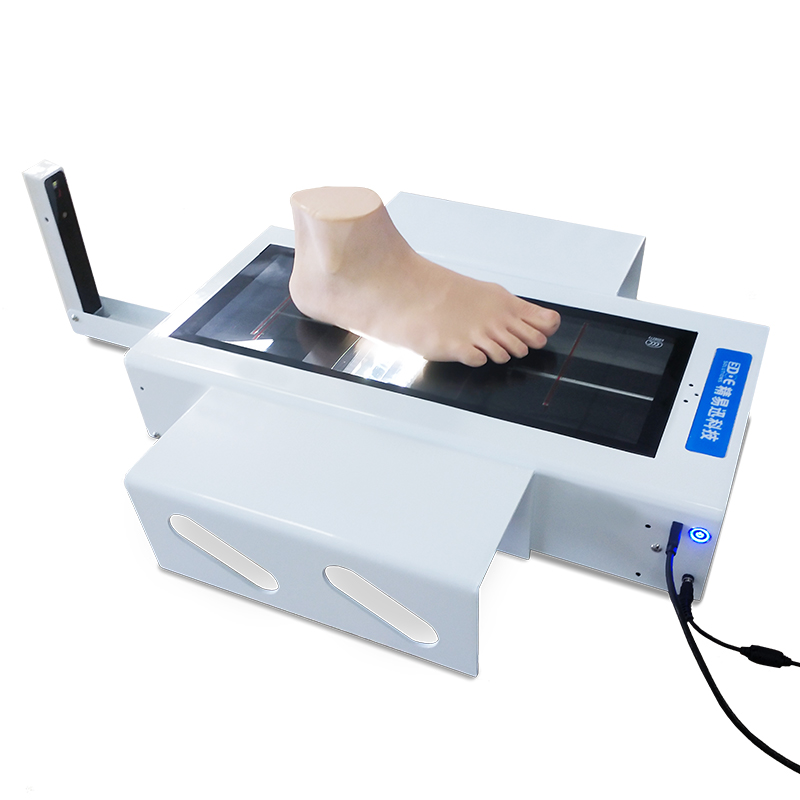The principle of a foot 3D scanner is mainly based on using laser beams to scan the surface of the foot. The spatial position of each point on the foot is then calculated based on the reflected light signals. A software program is used to generate a 3D model of the foot sole.
The foot 3D scanner can measure over 20 parameters, such as foot length, foot width, foot height, arch height, and metatarsal inclination angle.
The precision of the foot 3D scanner is relatively high. For example, the Jingyixun foot 3D scanner can reach a precision of up to 0.5 mm.
Moreover, this type of device is easy to operate, often featuring intelligent voice guidance. Users simply stand in the designated scanning area and follow the voice prompts step by step. It is simple to learn and easy to use.

The entire scanning process takes only 5 to 20 seconds. It is fast, highly accurate, and provides rich measurement data.
Laser scanning is safe for human eyes and the body, and it can efficiently assess foot health—for example, detecting flat feet, high arches, and foot pronation or supination.
The 3D model data obtained from the foot scanner can be imported into insole design software for personalized insole and orthotic design.
Once the design is completed, the data can be transferred to a 3D printer or insole carving machine to produce custom insoles tailored to the user’s needs.
The main application scenarios of the foot 3D scanner include the following:
- Personalized insole customization, especially in offline footwear stores, rehabilitation centers, and similar locations.
- Foot screening—for example, in schools, it can be used for large-scale foot screening among adolescents to detect potential foot problems early. This enables early detection and correction, helping to avoid missing the optimal treatment window.
- Rehabilitation assessment—suitable for use in hospitals and rehabilitation institutions for foot diagnostics.
